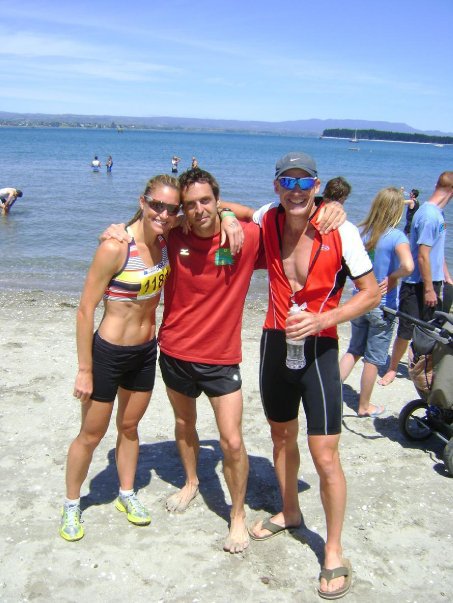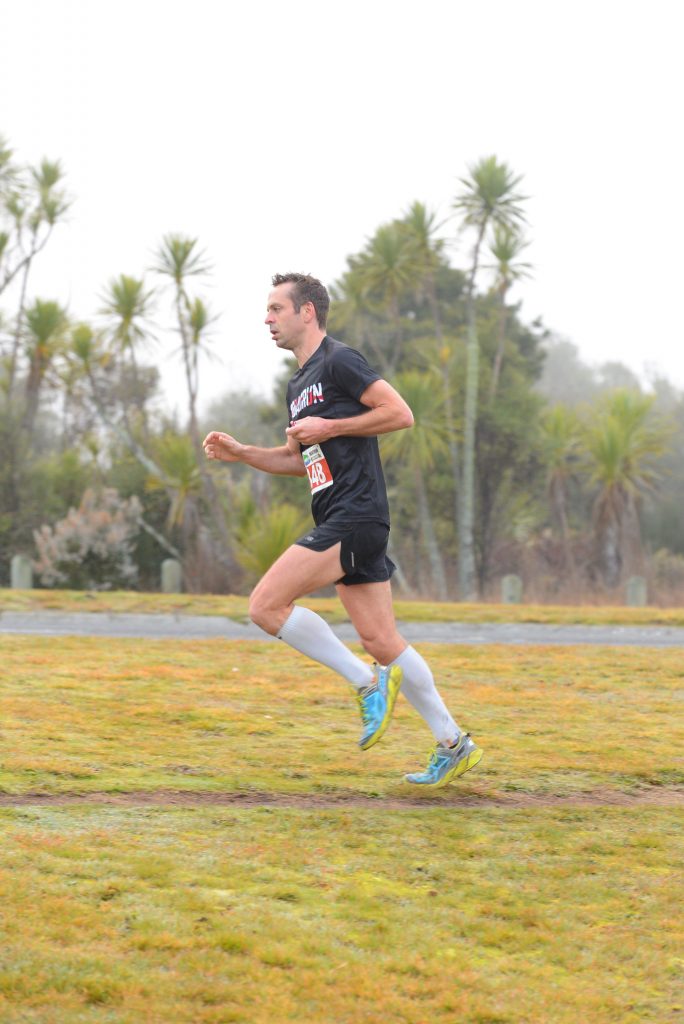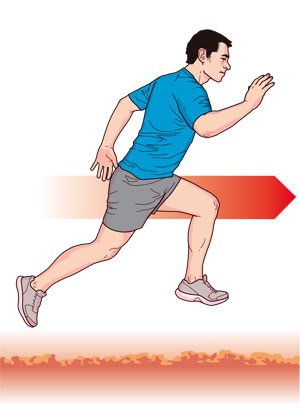What is the Train to Target Program?
Train to Target, SQUADRUN’s most popular program, is a weekly schedule but not necessarily 7 days of workouts. For most runners it should be a three, four or five day program however everything is provided should you wish to press your mileage.
Each Squad member’s week is a little different given work/family/life pressures, yet for most, the long run will fall on the weekend. The long run is the highest priority so we make that Priority 1 or “P1.” Since a recovery day should follow a P1 workout, a sample schedule would look like this:
- Sunday – P1 (long run)
- Monday – Rest/cross train (swim, bike, walk, weights, yoga, etc.)
If you have the opportunity to do two workouts in a week, the next most beneficial will be your Priority 2 or “P2.” The P2 is often scheduled for mid-week simply because you wouldn’t want to schedule it too close to your P1 given that both will have a fatiguing effect. There are some weeks where we specifically target this effect with back-to-back long runs, however in most cases we would put your P2 somewhere in the middle of the week. So now your schedule would look like this:
- Sunday – P1 (long run)
- Monday – Rest/cross train (swim, bike, walk, weights, yoga, etc.)
- Thursday – P2 (mid-week long run or double day, which consists of an AM and PM run)
If you were to do three runs a week the next target would be a speed workout. The speed workout (track workout, intervals, etc.) is based on your current fitness and ability, typically it is something you should build up to. The speed priority varies but is generally Priority 3 or “P3.” We put that on a Tuesday given that Monday was a rest day since it’s ideal to have fresh legs for speed work. Now your schedule would look like this:
- Sunday – P1 (long run)
- Monday – Rest/cross train (swim, bike, walk, weights, yoga, etc.)
- Tuesday – P3 (speed work)
- Thursday – P2 (mid-week long run or double day, which consists of an AM and PM run)
If all you were doing were those three runs you’d be well on your way to a properly prepared race or steady training plan. A fourth workout of the week is still a good idea if it fits your schedule. The Priority 4 or “P4” runs are at an easy aerobic pace. Since Tuesday was a strong effort, the P4 comfortable job would fall on Wednesday so your schedule now looks like this:
- Sunday – P1 (long run)
- Monday – Rest/cross train (swim, bike, walk, weights, yoga, etc.)
- Tuesday – P3 (speed work)
- Wednesday – P4 (easy aerobic, conversational pace)
- Thursday – P2 (mid-week long run or double day, which consists of an AM and PM run)
Feeling good and wish to keep moving through the week? The Priority 5/P5 workout would be any of the provided P5, P6 or P7 options. If you have a race on the calendar it’s important to work on speed while reducing mileage as that date approaches. In this case the other speed session would go on Saturday, now your week looks like this:
- Sunday – P1 (long run)
- Monday – Rest/cross train (swim, bike, walk, weights, yoga, etc.)
- Tuesday – P3 (speed work)
- Wednesday – P4 (easy aerobic, conversational pace)
- Thursday – P2 (mid-week long run or double day, which consists of an AM and PM run)
- Friday – Rest/cross train (swim, bike, walk, weights, yoga, etc.)
- Saturday – P5/speed if in last 8 weeks, P6 or P7 in regular training mode
This is a pretty standard 5-day plan although you might be comfortable with more/less depending on how you are feeling once the program is underway.
We encourage variety and the alternation of “hard” and “easy” weeks. For some, that’s a 4-day week followed by a 3-day week (or a 5-day followed by a 6-day, etc.). For others, simply getting those 2 long runs done is a big achievement — and this is great, you just have to start!
It won’t take long for you to figure out a rhythm that is best for your schedule, your fitness and your goal. Remember, the most important attribute in any runner is patience and consistency!
Build into it. Don’t try too much too soon. Your body will guide you. It’s OK to feel tired starting an easy run, training fatigued is actually good conditioning, however back it off for a bit if you’re showing signs of over-training (elevated heart rate, lack of desire to train, trouble sleeping, etc.).
Cross Training
YES! Your heart doesn’t know if it’s out for a run or sitting on a bike. The primary goal with the majority of your training is to increase aerobic capacity through time spent between 65% – 80% max heart rate . Obviously we want you to do this running where possible but your legs simply can’t sustain 7 days of abuse. This is where we encourage you to supplement your training with non-load-bearing, leg-centric activities like biking, swimming, yoga, etc.
. Obviously we want you to do this running where possible but your legs simply can’t sustain 7 days of abuse. This is where we encourage you to supplement your training with non-load-bearing, leg-centric activities like biking, swimming, yoga, etc.
In most cases this cross training should come at the expense of your Priority 6 and/or Priority 7 workouts however you may layer an easy ride on to one of those days if you wish.
We also encourage gym/strength workouts to compliment your training and help prevent injury.
Can I Still Enter Races While Following a Train to Target Program?
 YES! We encourage everyone to attend races often — have you ever seen Wardian turn down a spot on a start line?! Test your gear, test your fuel and test yourself!
YES! We encourage everyone to attend races often — have you ever seen Wardian turn down a spot on a start line?! Test your gear, test your fuel and test yourself!
On weeks that you intend to race drop the Priority 1 long run and where needed, ensure your mileage is reduced from Wednesday to race day. This typically means dropping the P2 mid-week run or swapping it for a low-priority run instead.
Likewise ensure the days following a race are also restful. Ease back into training with P6 and P7 runs with the aim to try to complete the P2 or even the P1 that coming weekend.
Understanding Training Paces
The majority of your training will be easy aerobic jogging. These runs  are what we call “Long Slow Distance” and are accurately described as a pace (min/mile) which will sustain a cardiovascular state of between 65% – 78% max heart rate.
are what we call “Long Slow Distance” and are accurately described as a pace (min/mile) which will sustain a cardiovascular state of between 65% – 78% max heart rate.
It is important to understand that the paces provided are applicable to the equivalent speed of running on flat road. You should not be trying to achieve these speeds on trail unless it is flat and unobstructed. This LSD pace might be in the program as 8-9 min/mile which you would find entirely achievable on road but almost impossible to maintain on trail. Obviously, you shouldn’t be trying to run this pace on trail, rather you should be attempting to replicate the effective effort (how it feels).
Learn to ‘run-to-feel.’ Aerobic running is commonly referred to as ‘conversational pace.’ The speed at which you could comfortably hold a conversation without being particularly short of breath.
Aerobic conditioning is the fundamental cornerstone of training for an ultra-distance event and it’s importance should not be overlooked.
If you’re not always hitting those target training speeds or intensities – don’t panic. You can exceed 65% max heart rate on a brisk uphill walk or a relatively easy jog. Where supplied paces really matter is in your speed work/track sessions.
Initially times provided for your speed sessions will seem unachievable. Likely you are not used to running at such intensities and along with the physical demands you will find the mental demands of running fast are also foreign. Adaptation to this discomfort requires persistence. You may hate one mile repeats to begin with, but after a few months of regular speed work you will no longer suffer the hardship as you once did. Perhaps you’ll even learn to love it?!
What’s a strideout? (often appears as 8x 100m repeats)
Strideouts are…recovery….range of movement….biomechanic….neuromuscular exercises!
 The purpose of this activity is to recruit muscles quickly. Your nervous system should be firing rapidly to call a heap of muscles to precise movements.
The purpose of this activity is to recruit muscles quickly. Your nervous system should be firing rapidly to call a heap of muscles to precise movements.
It’s not about inducing a heart/fatigue response, it’s just about operating your legs at a full range of motion and promoting a clean form that you’d see a sprinter use in the Olympics 100m finals. Running hard and clean for short periods will help with body alignment. Concentrate on being up-right, on moving your arms through your hips with elbows at right-angles. Think about being on your fore-foot and promoting a good knee lift to drive through.
In terms of effort you should achieve something in the vicinity of your mile race pace once you have warmed to the movement a little.
It’s an odd exercise, think of it as a really relative cross training move.
Hill Repeats
The hill should be approximately 9% grade but anything from 6% to 14% is acceptable. I find when it gets too steep the run often turns into ‘springs’ or ‘bounds’ which is a different workout all together. We’d prefer this be mostly a ‘running’ session. When you’re on a steep hill it can be difficult to run properly and your form may suffer.
Join SQUADRUN online!
Strava – SQUADRUN Group
Strava – Kerry Suter
GarminConnect – Kerry Suter



